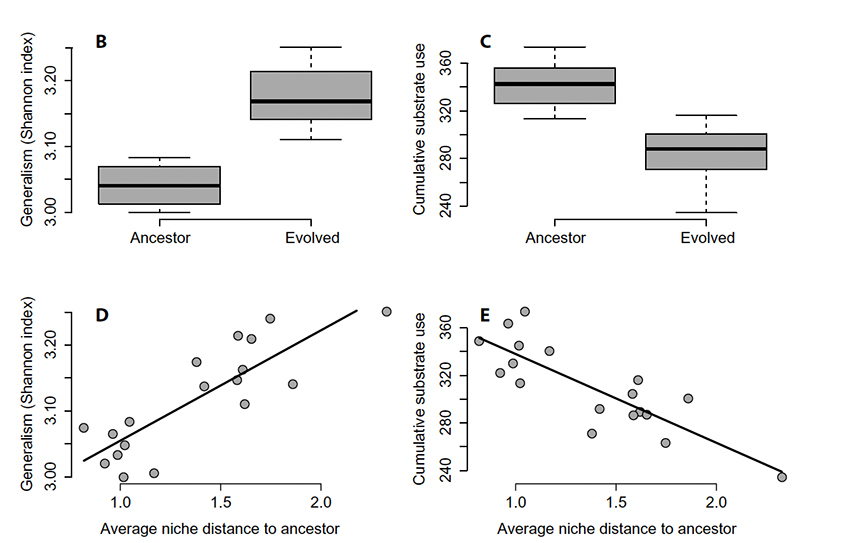HIGH FUNCTIONAL DIVERSITY STIMULATES DIVERSIFICATION IN EXPERIMENTAL MICROBIAL COMMUNITIES.
Jousset, A., Eisenhauer, N., Merker, M.,Mouquet, N., Scheu, S.(2016).
Science Advances, 2, doi:10.1098/rsbl.2015.1073
Key message : We tested whether functional diversity can explain diversification patterns. We tracked the survival and diversification of a focal bacterial species (Pseudomonas fluorescens) growing in bacterial communities of variable diversity and composition. We found that high functional diversity reduced the fitness of the focal species and, at the same time, fostered its diversification. This pattern was linked to resource competition: High diversity increased competition on a portion of the resources while leaving most underexploited. The evolved phenotypes of the focal species showed a better use of underexploited resources, albeit at a cost of lower overall growth rates. As a result, diversification alleviated the impact of competition on the fitness of the focal species. We conclude that biodiversity can stimulate evolutionary diversification, provided that sufficient alternative niches are available.
